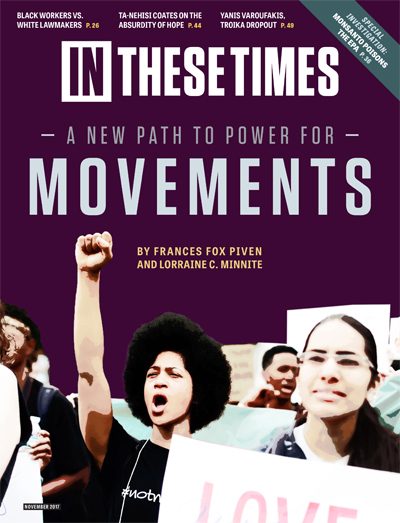Want a Radical Alternative to Trump’s Immigration Agenda? Try Open Borders.
It’s not just a pipe dream.
Dayton Martindale

o·pen bor·ders
noun
1. An immigration policy allowing the free movement of people between nations.
“Currently Going Through Customs Even Though I Was Born On This Planet.” —Jaden Smith, righteously indignant on Twitter
Why Do We Build the Wall?
On immigration, per usual, the current administration is dangerous and incoherent. Most recently, Trump ordered an end to DACA, then launched a bizarre attempt to deal with Democrats to pass it through Congress. Yet when it comes to alternatives, even many anti-Trump federal legislators won’t go beyond the tired refrain of “comprehensive immigration reform.” Some organizers, however, are pushing for more radical solutions, from an end to deportations to the end of immigration restrictions entirely.
Making the Case
You don’t have to be all that woke to support, at minimum, equality of opportunity — for every kid to have a shot at the American Dream no matter what circumstances they’re born into. Yet this opportunity is precisely what border control eliminates. University of Toronto political scientist Joseph Carens compares today’s immigration regime to a new feudal order: The accident of birth — in this case, where your family lives with respect to artificial lines established through centuries of wars and treaties you had nothing to do with — puts legal constraints, enforceable by violence, on the life you can live and where you can travel. And if that weren’t enough, studies suggest open borders would do wonders for global GDP.
Workers Of the World, Divided?
Historically, many vocal critics of open borders have come from progressive circles. Some environmentalists have worried immigration could contribute to overpopulation, though this penchant for scapegoating has somewhat abated. More notably, some labor unions have argued that exploited foreign labor would undercut pay and positions for U.S. workers; Bernie Sanders, in 2015, called open borders “a Koch Brothers proposal.” Yet, advocates say, this outcome is by no means inevitable. Legalizing migration might also further empower immigrant workers to organize and demand their rights in the workplace, raising the floor for all workers.
A Dream Come True?
Open borders may sound utopian, the pipe dream of someone whose primary political influence is John Lennon’s “Imagine.” But strict immigration laws are relatively new in the scheme of things, first popping up in this country with the 1882 Chinese Exclusion Act. More restrictions arose over the years, and the contemporary big-stick approach took off in 1986, when Reagan’s immigration law granted amnesty to current undocumented immigrants but ramped up future enforcement. Even today, many who really want to come to the U.S. find a way — we just send armed guards after them and make their lives as painful as possible. In the end, open borders is far less fanciful than the faith of elites that they can turn lines on a map into something tangible and impermeable.
This is part of “The Big Idea,” a monthly series offering brief introductions to progressive theories, policies, tools and strategies that can help us envision a world beyond capitalism. For further conversation on open borders, read “Are Open Borders the Solution to the Refugee Crisis?”
Dayton Martindale is a freelance writer and former associate editor at In These Times. His work has also appeared in Boston Review, Earth Island Journal, Harbinger and The Next System Project. Follow him on Twitter: @DaytonRMartind.









